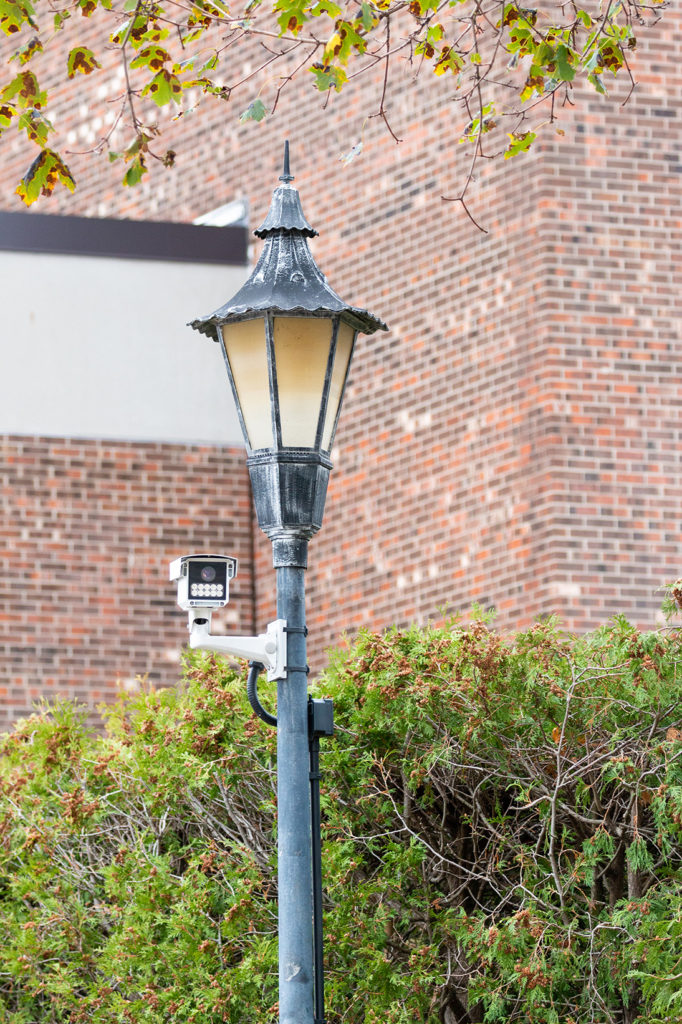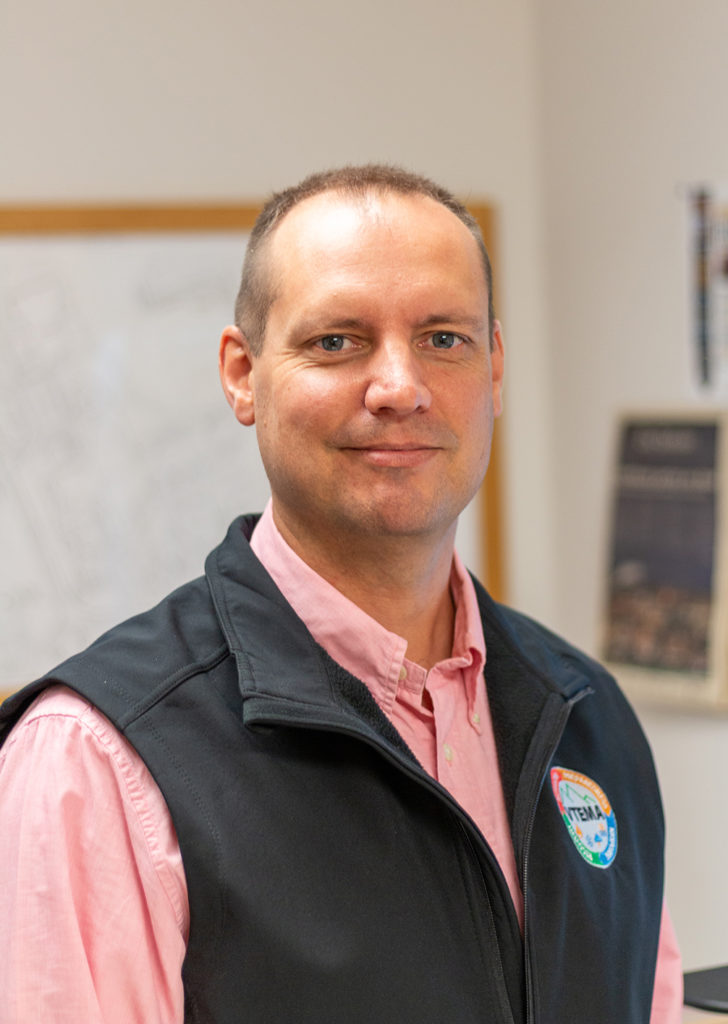
by Matt Heller
Executive Editor
Every time a vehicle leaves through one of St. Michael’s three exits, a camera records the license plate number. Cameras are also rolling near almost all card-access entries on campus. At the Robert E. Sutton Fire and Rescue station, dispatchers such as Matthew Thompson ‘19 have an eye on the monitors that play live security camera feeds from across campus. These measures are only part of those addressing school-wide safety issues.
There are over 200 security cameras on-campus, according to Doug Babcock, director of Public Safety. Some of these cameras record large areas such as the 300’s field, while others focus on single hallways. There are, however, some places where cameras are purposely not placed. This includes residential hallways in which there is a common bathroom, typical of most first-year living accommodations.

“You as a student have a reasonable expectation of privacy right outside your bedroom door, and we will not violate that by putting a camera there,” Babcock said.
Incidents can be missed when there’s not a camera around. On October 20, a racial slur was written on the first floor of Ryan Hall, and because Ryan is a residential hall with a common bathroom on each wing, there are not any cameras in the hallways.
Between September 27 and 28, when Patriot Front, a white nationalist group, placed stickers around campus promoting their cause, security cameras were in the area, and the footage is currently being reviewed by the FBI.
“Someone might feel like their privacy is being violated, but other students would feel safe. Past putting [security cameras] in freshman dorms, I don’t think there’s a violation of privacy,” said Vanessa Bonebo, secretary of student life for the Student Government Association.
The effectiveness of security camera systems came up as a topic of concern at the October 22 Student Government Association meeting. Bonebo said the cameras are not of good quality and students need to call out administration. She reported this year’s sticker incident, and thought the Public Safety dispatcher wasn’t taking her seriously, and noted that an Assistant Director and Resident Director on duty had to take down some of the stickers themselves.
There are no federal regulations, nor any state regulation in Vermont that requires the use of surveillance systems on college campuses. So, this is up to the institution’s discretion, and they must decide how to use these systems properly and ethically.
According to Babcock, few departments on campus that have access to their cameras. Departments within the college and any outside entities must go through Public Safety to obtain the footage. The college may decide there is no need to release the footage, in which case the department or other entity would not be granted access.
“We have firmly admonished our readers that they need to be beyond ethical, policy as far as those who have access to the footage, when they’re revealed, they have to be very careful, beyond transparent in my humble opinion,” said Robin Hattersley-Gray, Editor-in-Chief of Campus Safety Magazine, a national publication produced for those involved in security at hospitals, schools and universities.
Under the Family Educational Rights and Privacy Act (FERPA), photos and videos of students are educational records, subject to specific exclusions. Therefore, Hattersley-Gray recommends institutions should have a policy that outlines appropriate reason for use, who will have access, how long the footage should be stored, and how it should be destroyed, among other recommendations.
Addressing incidents
In terms of the stickering event, there’s not a lot of legal action that can be taken. Since none of the words on the stickers constituted a hate crime, the only likely charges that the perpetrators could face would be unlawful mischief, a misdemeanor. This would simply cover the labor to remove the stickers.
If it was found that a St. Michael’s student wrote the racial slur in Ryan Hall, little information could be released, only that the incident occurred and it was taken care of by the administration. Public Safety is working with Student Life to reach out to those who live in the building.
“Maybe if this campus felt like a community for all, it wouldn’t be such a problem, people wouldn’t be reacting the way they are,” Bonebo said, expressing the need to take preventative measures.

(Photo by Matt Heller)
Theoretically, if all problems were limited to the first-year class, according to Babcock, all 427 of them have had just over 10 weeks as a St. Michael’s community after 18 years of experiencing the world in different ways. Despite this, only one person thought it was ok to write a racial slur in a hallway.
“I want to offer some context and say that may not mean that the world and St. Mike’s are horrible places,” Babcock said. “We do need to continue to work and we must be advocates for people that are affected and impacted,” he added, noting that incidents won’t cease to exist, and the community must be able to respond and address.
Bonebo, however, would still like to see more openness on Public Safety’s behalf, especially when it comes to investigations, as well as improved immediate responses to incidents.
For Babcock, catching a suspect only satisfies part of the concern. “The rest is that it happened or how the community responded. And that’s the part I really need to get right, and that we as a college need to get right,” he said.

